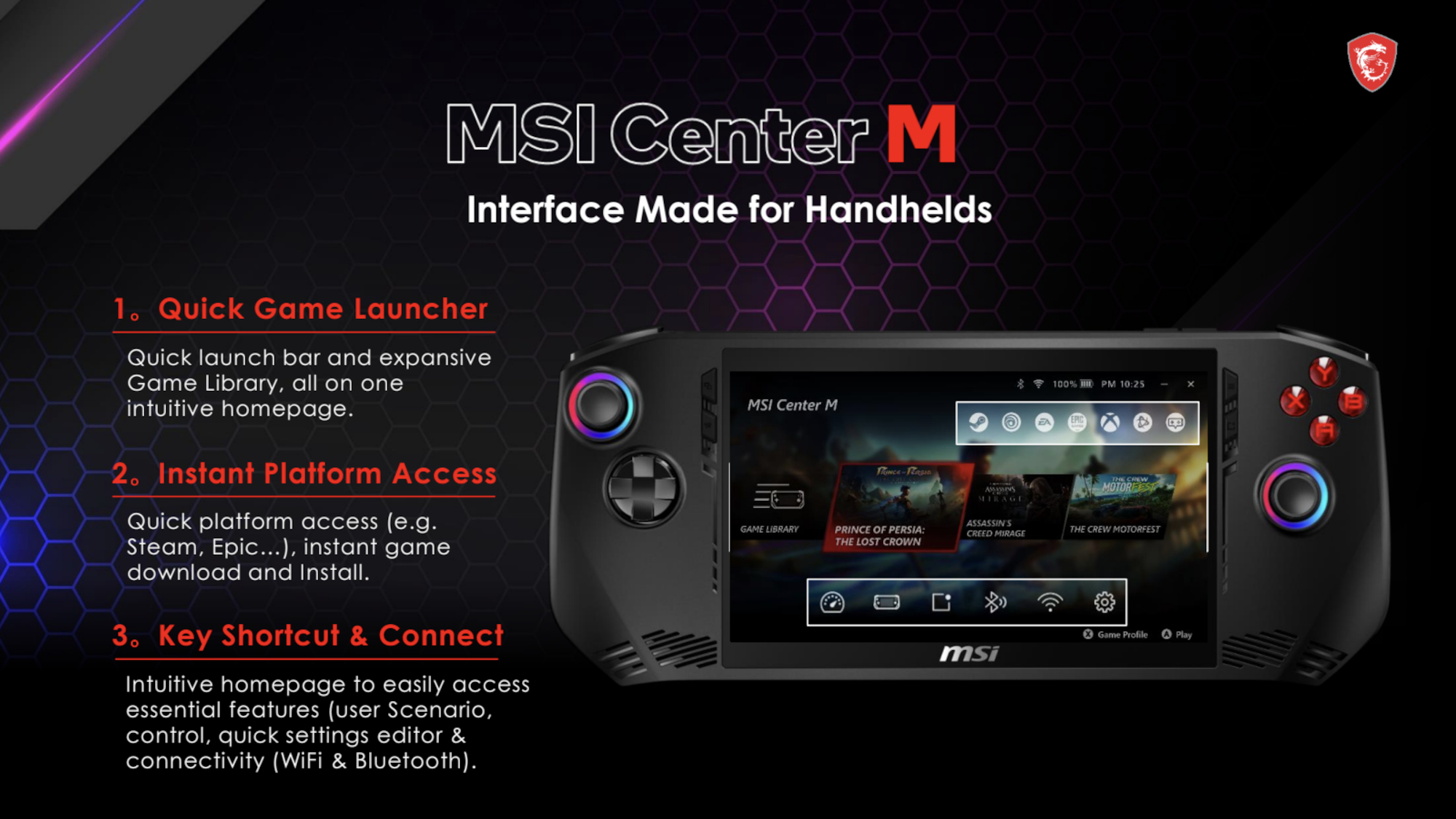I own a Steam Deck OLED and the MSI Claw has me worried — here's why
Come at the king and you best not miss? MSI looks to have the Deck in its sights

Since its launch in 2022, the Steam Deck's crown has been tested more times than various nefarious schemers tried to pinch the Iron Throne in a certain HBO mega hit. The Asus ROG Ally, Ayaneo Air 1S and Lenovo Legion Go have all come for the king and only ever so slightly missed. For my money, the OG Steam Deck is still the best portable PC you can buy in 2024.
Actually, that’s clearly nonsense. Obviously the Steam Deck OLED is the best handheld PC of the moment. Yet even Valve’s wonderfully updated device and its sensational screen could be tested (and possibly dethroned) by a new pocket-sized PC that currently looks like the real deal.
Enter the MSI Claw. Badass name, right? My colleague Tony Polanco has already done a hands-on review of the latest Steam Deck rival, and as he says in his piece, this baby could make Valve’s machine seriously sweat.
Specs-wise, the MSI Claw has a whole lot going for it"
Specs-wise, the MSI Claw has a whole lot going for it. While we’ve seen 1080p screens in the portable PC space before, the biggest weapon in its arsenal is its processor.
The Claw is the first gaming handheld to use an Intel Core Ultra CPU, and this new Meteor Lake chip uses the same Intel Xess tech you’ll find in the firm’s Arc GPUs.
Why is this such a big deal? Because this tech works a bit like Nvidia DLSS and AMD FSR. Namely, it renders games at lower resolutions, then uses machine learning to upscale the image to the Claw’s native 1080p resolution. The results? Higher frame rates with only minor compromises to image quality. If/when Valve gets around to making Steam Deck 2, I really hope the device is treated to a form of tech like DLSS.
As much as I love my Deck OLED, we’re still talking about a machine that can struggle to run many modern games at a locked 30fps, even with medium to low graphics settings enabled. Right now, that’s why the MSI Claw and its Meteor Lake processor make it look like a potential Deck destroyer.
Get instant access to breaking news, the hottest reviews, great deals and helpful tips.
Interface the music

It’s not just on the CPU front the Claw has a clear advantage over the Steam Deck and Steam Deck OLED. The other big weapon it has up its sleeve is MSI Center M: A custom interface specifically built for MSI Claw that looks like it could rival and even outgun SteamOS.
One of the main reasons the Deck has managed to remain more popular than its more powerful rivals is because its operating system is such a joy to use. Yet with the impending arrival of MSI Center M, it now finally looks like it has a worthy rival that’s in a different league to the likes of the cumbersome Windows 11 interface of the Asus ROG Ally.
The main draws of MSI Center M are its Quick Game Launcher and the fact you can easily tinker with performance and power-saving features, while also being able to tweak the handheld’s RGB lighting — another cool (if somewhat clichéd) feature Steam Deck lacks.
"The Claw’s interface allows you to access Xbox Game Pass and the Epic Games Store easily"
Even more impressively, the Claw’s interface allows you to access Xbox Game Pass and the Epic Games Store, neither of which are available on the Deck without some serious tweaking. What’s more (and perhaps this may prove to be the killer blow), the Claw also lets you quickly launch your Steam library.
For the moment, Valve still has a comfortable market lead in the handheld gaming space, and rightly so. While the original remains a great gaming device, Steam Deck OLED takes all the winning accessibility of the OG model then massively boosts its appeal with the best screen we’ve ever seen in a handheld.
Yet it’s clear Gabe and company absolutely should not be resting on their laurels. Not only is the MSI Claw coming for the firm’s breakout device, but the upcoming Ayaneo Next Lite (which boasts its own “Steam OS clone”, thanks IGN) may yet prove to be an equally serious contender.
For now, the Steam Deck and its updated OLED model still hold a comfortable lead. Yet as we’ve seen with the seesawing success between Sony and Microsoft in past console wars, it’s rare a platform holder can knock back every competitor that comes for its shiny crown.
More from Tom's Guide
- Steam Deck OLED is the must-buy handheld of 2023
- MSI Claw: Specs, design, interface and more
- Steam Deck OLED — 3 reasons to buy and 2 reasons to skip

Dave is a computing editor at Tom’s Guide and covers everything from cutting edge laptops to ultrawide monitors. When he’s not worrying about dead pixels, Dave enjoys regularly rebuilding his PC for absolutely no reason at all. In a previous life, he worked as a video game journalist for 15 years, with bylines across GamesRadar+, PC Gamer and TechRadar. Despite owning a graphics card that costs roughly the same as your average used car, he still enjoys gaming on the go and is regularly glued to his Switch. Away from tech, most of Dave’s time is taken up by walking his husky, buying new TVs at an embarrassing rate and obsessing over his beloved Arsenal.
